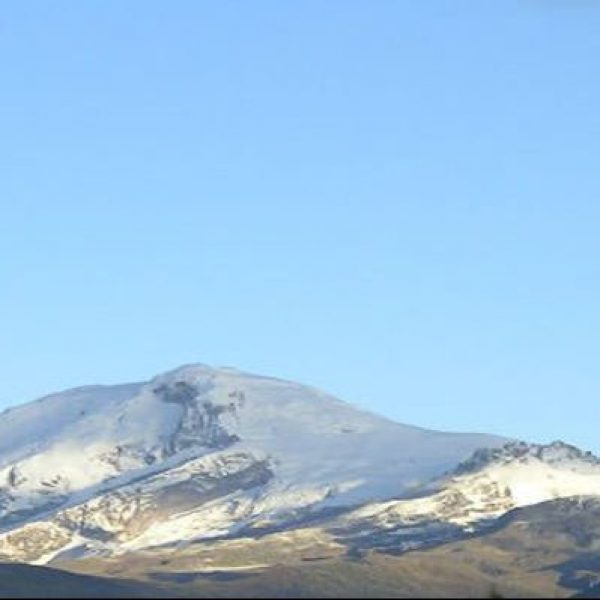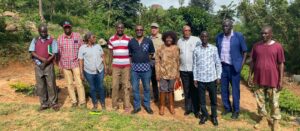“We strongly believe that the protection of forests, the lives of local families, and their connection to the outside world are not separate but are deeply intertwined,” Wain Collen, Executive Director, Los Aliados

Andean cloud forests are the most diverse and fragile cloud forests on earth. Many consider this ecosystem the world’s greatest conservation priority due to the remarkable number of endemic species found nowhere else on the planet. Unfortunately, Andean cloud forests are under threat. In Ecuador, up to 20% of eastern cloud forests have been lost to deforestation in the past two decades. To address this urgent challenge, Fundación Aliados is partnering with CloudForest Organics LLC, the Cayambe-Coca National Park (PNCC), and local farming families to create a new buffer corridor that combines agroforestry and cloud forest conservation to link three mega-diverse national parks.
At Fundación Aliados, our vision is that indigenous and local communities are stewarding vulnerable tropical forests for future generations’ wellbeing. This is no easy task, as local communities need to confront processes of rapid and abrupt change and find new ways to balance their economic needs with forest conservation. Our experience over a decade partnering with indigenous communities in the Amazon and Andes has shown us that a new model is possible, but lots of work and learning across cultures is needed. We strongly believe that the protection of forests, the lives of local families, and their connection to the outside world are not separate but are deeply intertwined.
 Since partnering with 2,000 Kichwa indigenous farmers and Runa LLC to create a brand-new value chain from the guayusa leaf, we have solidified our approach into a hybrid “non-profit / for-profit” model, that aligns economic, social and environmental benefits. Aliados is now working with farmers in the Amazon producing guayusa, wild jungle peanuts, Amazonian cinnamon, and lemongrass, and in the Andes, with goldenberries, honey, botanicals, and a variety of Andean grains. To date, our work has generated over $4.5M in income for more than 3,000 families from sustainable agriculture.
Since partnering with 2,000 Kichwa indigenous farmers and Runa LLC to create a brand-new value chain from the guayusa leaf, we have solidified our approach into a hybrid “non-profit / for-profit” model, that aligns economic, social and environmental benefits. Aliados is now working with farmers in the Amazon producing guayusa, wild jungle peanuts, Amazonian cinnamon, and lemongrass, and in the Andes, with goldenberries, honey, botanicals, and a variety of Andean grains. To date, our work has generated over $4.5M in income for more than 3,000 families from sustainable agriculture.
The next phase in achieving our vision is integrating our work at the landscape level; incubating agroforestry value chains within forest restoration systems, while reinforcing protected areas and conserving wildlife habitat. To this end, we are very excited to have launched a new project in partnership with CloudForest Organics LLC, the Cayambe-Coca National Reserve (PNCC), and local farming families. Together, to create a multi-functional buffer corridor at the crossroads between the Cayambe-Coca, Sumaco-Galeras, and Antisana National Parks that total over 700,000 hectares (ha’s). Local families in the 30,000-ha buffer corridor derive most of their income from low-grade cattle ranching, transforming the area into fragmented forest and pastures creeping into the national parks.
 The water sources that originate in this high Amazonian biome risk drying up, while at-risk wildlife such as tapirs, bears, and Andean eagles lose habitat. A hopeful sign is that a growing number of landowners are eager to find more sustainable pathways. Inefficient farming and the collapse of the milk price are making current farming practices untenable. It is clear to all involved that small and medium-sized farmers are at the heart of this challenge and are also the key to long-term sustainability. We will be working to significantly enhance the role that farmers play – in collaboration with conservation and social business partners – in the sustainable management of Andean cloud forest.
The water sources that originate in this high Amazonian biome risk drying up, while at-risk wildlife such as tapirs, bears, and Andean eagles lose habitat. A hopeful sign is that a growing number of landowners are eager to find more sustainable pathways. Inefficient farming and the collapse of the milk price are making current farming practices untenable. It is clear to all involved that small and medium-sized farmers are at the heart of this challenge and are also the key to long-term sustainability. We will be working to significantly enhance the role that farmers play – in collaboration with conservation and social business partners – in the sustainable management of Andean cloud forest.
I’ll wrap up with a short overview of what we’ll achieve over the coming 24 months.
- Establish an agroforestry restoration program on 80 hectares of degraded land along the border of the PNCC and incorporate 300 ha’s into the park’s sustainable management plan with private landowners.
- Implement an ecological and socio-economic monitoring program to support learning at the intersection of cloud forest and farming systems.
- Incubate two new agroforestry value chains that increase income for 30 families by 30% and reduce their pasture expansion by 50%.
- Create a Conservation and Productive Landscape Action Plan to scale results across the buffer corridor in phase II.
Cloud Organics CEO, Craig Leon, will provide more details of this exciting project in Part II of our blog!






